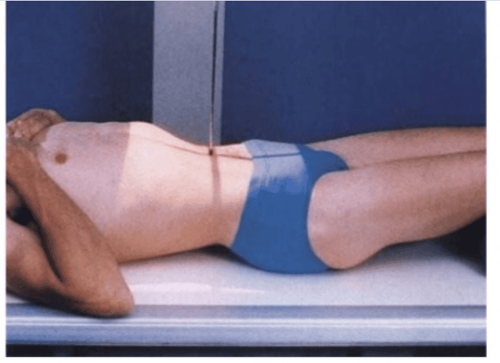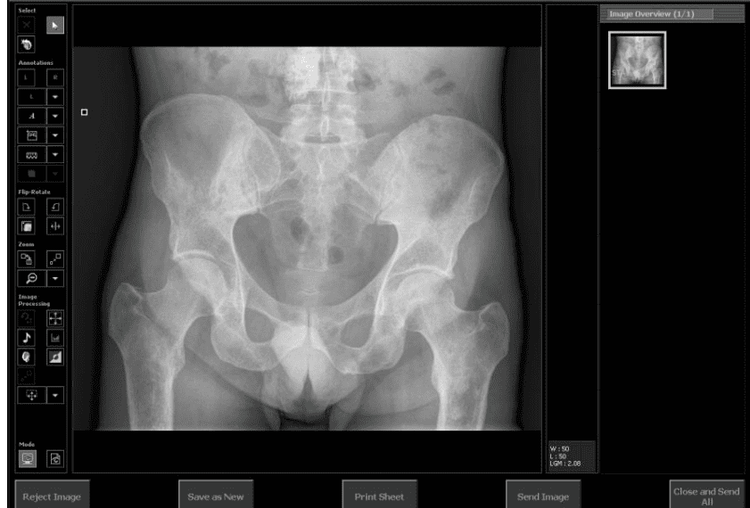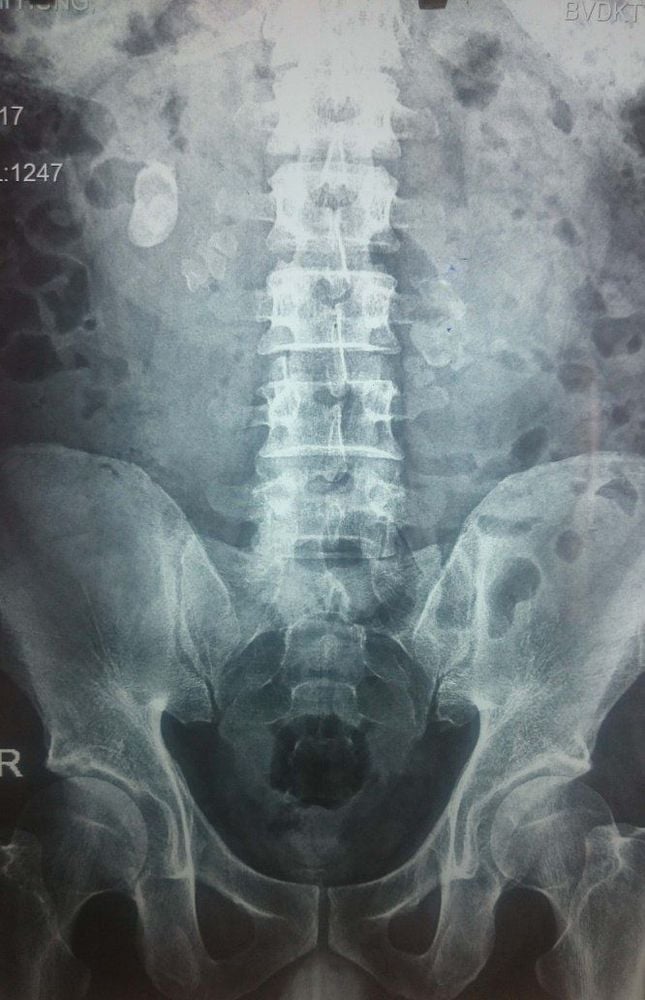This is an automatically translated article.
The article is professionally consulted by MSc, BS. Dang Manh Cuong - Radiologist - Radiology Department - Vinmec Central Park International General Hospital. The doctor has over 18 years of experience in the field of ultrasound - diagnostic imaging.To diagnose abnormalities, urinary pathologies, especially urinary stones, the patient may be prescribed imaging methods by the doctor. In particular, the technique of unprepared urology x-ray is most often used in diagnosis.
By unprepared urology X-ray technique, the doctor can detect contrast-enhanced stones in the urinary tract in terms of shape, size, location and quantity, and abnormal contrast images in the abdomen.
In addition, with this method, the patient is evaluated for changes in the lumbar spine, the sacral region, and the kidney shadow can be seen on the x-ray. At the specialist's request, unprepared urography may be indicated for the patient.
Unprepared urological x-ray technique has no absolute contraindications but relative contraindications for pregnant women.
1. Prepare
The radiologist or radiologist will perform the unprepared urinary x-ray. At the same time, facilities such as specialized x-ray machines, films, film printers, and storage systems should be fully prepared before implementation.On the patient's side, do not use drugs with high contrast such as Bismuth, protein tablets, do not take gastrointestinal contrast agents 3 days before the scan, do not eat foods that cause gas. The patient has to clean 2 enemas before taking the picture. It is necessary to remove metal objects on the urinary system area so as not to affect the x-ray process.

2. Proceed
The technician received the order to take an unprepared urological x-ray, determined and compared the parts to be taken with the clinical diagnosis. Invite the patient into the imaging room and explain in detail the procedure. Adjust the shooting table, the ball is 1m away from the film. Instruct the patient to lie supine on the imaging table, arms down. Adjust the central ray to the midpoint of the line joining the two iliac crests, 1cm below the navel. Stick the letter F on the corresponding digitized sensor plate to the right of the patient. Enter the patient's name, age, and gender into the machine, select the computer program corresponding to the part to be scanned. Adjust technical factors (65KV, 12mAs) Ask the patient to lie still for the scan. Close the door to the x-ray room. After taking the picture, instruct the patient to wait in the waiting room to get the results. Adjust the contrast, check the balance of the images on the film. Print film, compare with satisfactory film standards.
3. Evaluation of the results
Urinary system: the image of the entire urinary system must be within the framework of the film, if the bladder is full of urine, a slightly raised shadow can be seen in the pelvis. Skeletal system: images should clearly show at least the last two ribs, vertebrae, posterior spines, pelvis, sacrum, and pubic joints. Muscular system: the shadows of the two pelvic muscles can be seen, the diaphragm can be seen as much as possible. Liver: the shadow of the liver can be seen, and in the case of gallstones, contrast can also be clearly seen. Spleen: the splenic shadow or in the case of calcifications the vessels of the spleen can also be seen. Gastric balloon usually shows an air bubble in the left upper middle, below the diaphragm.Contrast images must be clearly visible on film such as: calcifications, contrast stones in the abdomen of organs such as gallbladder, biliary tract, pancreatic calcifications, pancreatic stones, adrenal calcifications, in arteries hepatic vessels, visceral veins, aorta, splenic arteries, renal arteries, iliac arteries, calcifications of the veins in the pelvis, calcified intra-abdominal lymph nodes, mesenteric vessels, appendiceal stones, muscular calcifications Female genital organs such as uterus, ovaries, prostate gland, urinary contrast stones...
Through unprepared urinary system x-ray images, the doctor reads the lesions, described above computer with internal connection, print the results and advise the patient, the patient's family if required.

Urinary abnormalities and pathologies, especially urinary stones, are examined and diagnosed by unprepared urological x-ray techniques performed throughout the Vinmec medical system.
Please dial HOTLINE for more information or register for an appointment HERE. Download MyVinmec app to make appointments faster and to manage your bookings easily.














